After finally being freed from what could be best described as a ‘frustrating’ spell with Tottenham, summer mover Giovani Lo Celso has already boosted the quality of Real Betis’ attack with immediate effect.
The permanent move to Los Verdiblancos marks Lo Celso’s return to a club where he enjoyed one of his most productive attacking seasons, having been involved in 22 goals while on loan from PSG in the 2018/19 season.
Even the most passionate Lo Celso supporters might not have envisioned such a dramatic impact so soon, with the Argentine already matching some of the most efficient scorers in LaLiga.
While the season is still in its infancy, the transfer has begun to make a lot of sense from the perspective of Betis boss Manuel Pellegrini.
Having seen Nabil Fekir depart this summer and Isco still unavailable after a long-term injury, Pellegrini’s side were crying out for a dynamic playmaker who could shoulder the creative load.
But importantly for Betis, Lo Celso has been far from a stop-gap replacement, displaying all the signs of an astute acquisition who can propel the club towards another season of European qualification.
This tactical analysis and scout report will begin to highlight some of the reasons why Lo Celso has hit the ground running in Betis’ system.
Our analysis will discuss not only how his arrival has impacted Betis’ attacking efforts but also their tactics without the ball, provoking an important discussion on how he and Isco can co-exist within the starting lineup.
Context: Betis’ Season So Far
When beginning to discuss Pellegrini’s Betis, it is essential to highlight some of the key features of the squad, as it allows us to understand some of the reasons why Lo Celso was chosen to slot straight in.
So far this season, Betis have once again emerged as one of the more offensive-minded teams in LaLiga, bettered only by Real Madrid and Barcelona when calculating their touches in the opposition’s box per 90 (20.82).
From positions like these, we see Pellegrini’s team display their confidence in front of goal, failing to shy away from shooting opportunities.
Thus far, they have taken 11.91 per 90 (fourth in LaLiga).
Perhaps the most damning stat for Betis would be the fact that their confidence hasn’t necessarily translated into overall efficiency after nine matches, having only scored eight total goals from an expected goals figure of 15.02 xG.
Whilst their expected goals statistic can begin to paint a negative picture revolving around wastefulness and missed opportunities, it does also portray the ease at which Betis have been able to craft important goalscoring opportunities.
Lo Celso’s Role At Betis
These goalscoring opportunities have certainly been boosted by the arrival of Giovani Lo Celso, who has already displayed his technical prowess in the Real Betis midfield.
When we covered Lo Celso’s Betis teammate, Isco Alarcón, last season, we felt that it was important to mention that Pellegrini’s number tens were not fixed to the central channel.
The fluidity of their offensive positioning has meant that Lo Celso’s talents can be showcased across the entirety of the final third.
His heat map shows him popping up within either half-space or even from wider areas to exploit his impressive crossing abilities.
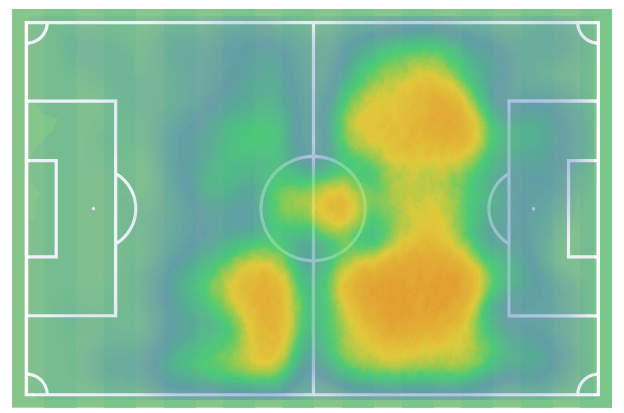
Pellegrini has also noted that Lo Celso shares one of Isco’s most desirable traits as a creative outlet- the desire to drop deeper to collect the ball, almost demanding possession at times.
An example of this would be during the fiercely fought derby match against Sevilla, where it was clear that Lo Celso’s freedom to instigate attacking opportunities would be minimised compared to the earlier matches in the season.
Therefore, we see Lo Celso almost dropping into a right-back position to offer himself as the first passing outlet to allow Betis to build out from the back.
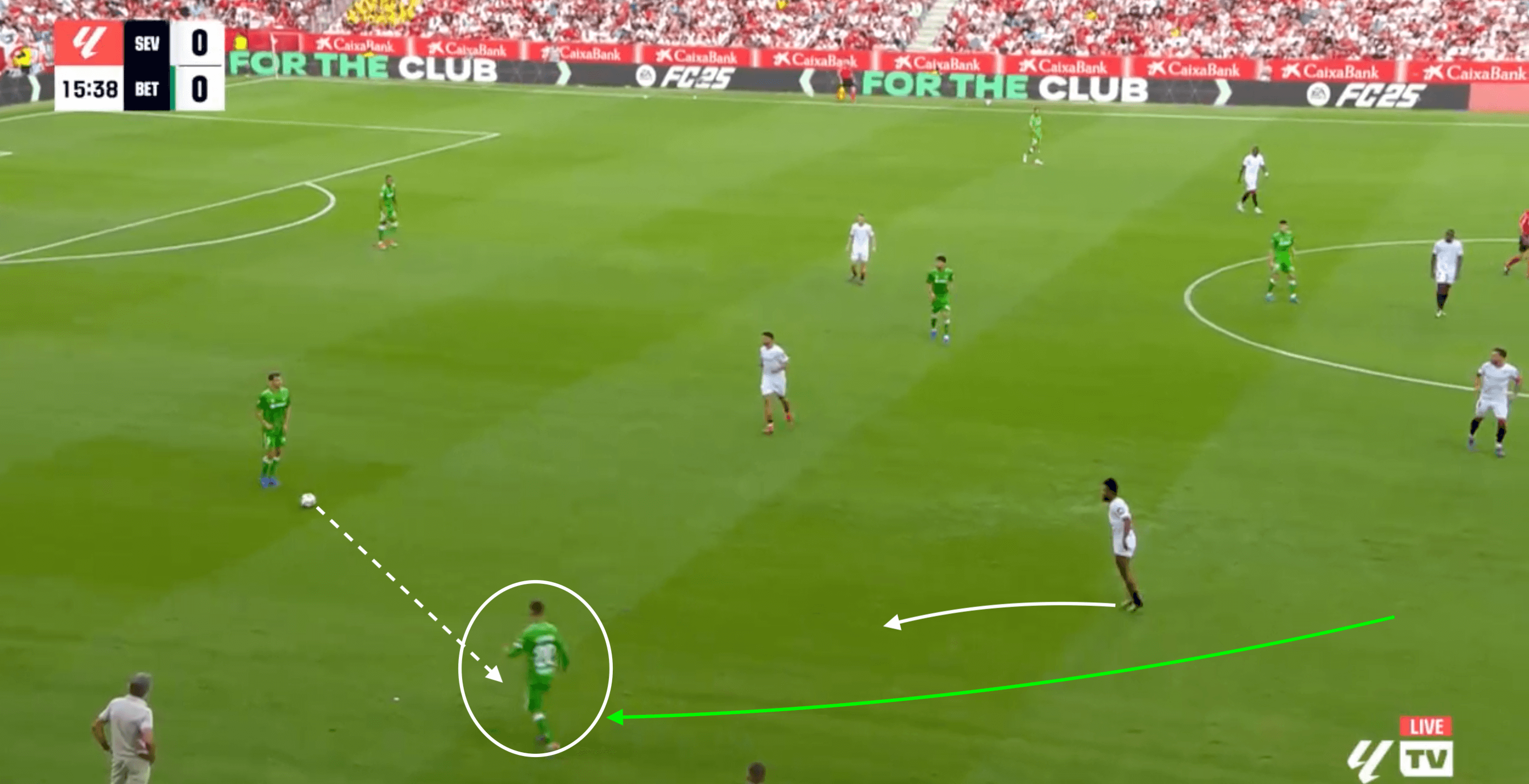
Not only does this get the ball at the feet of Betis’ most progressive player, but the switch in positioning allows Betis to manipulate the defensive positioning of their rivals, with Cardoso free to drive into space after Lo Celso quickly shifts the ball.
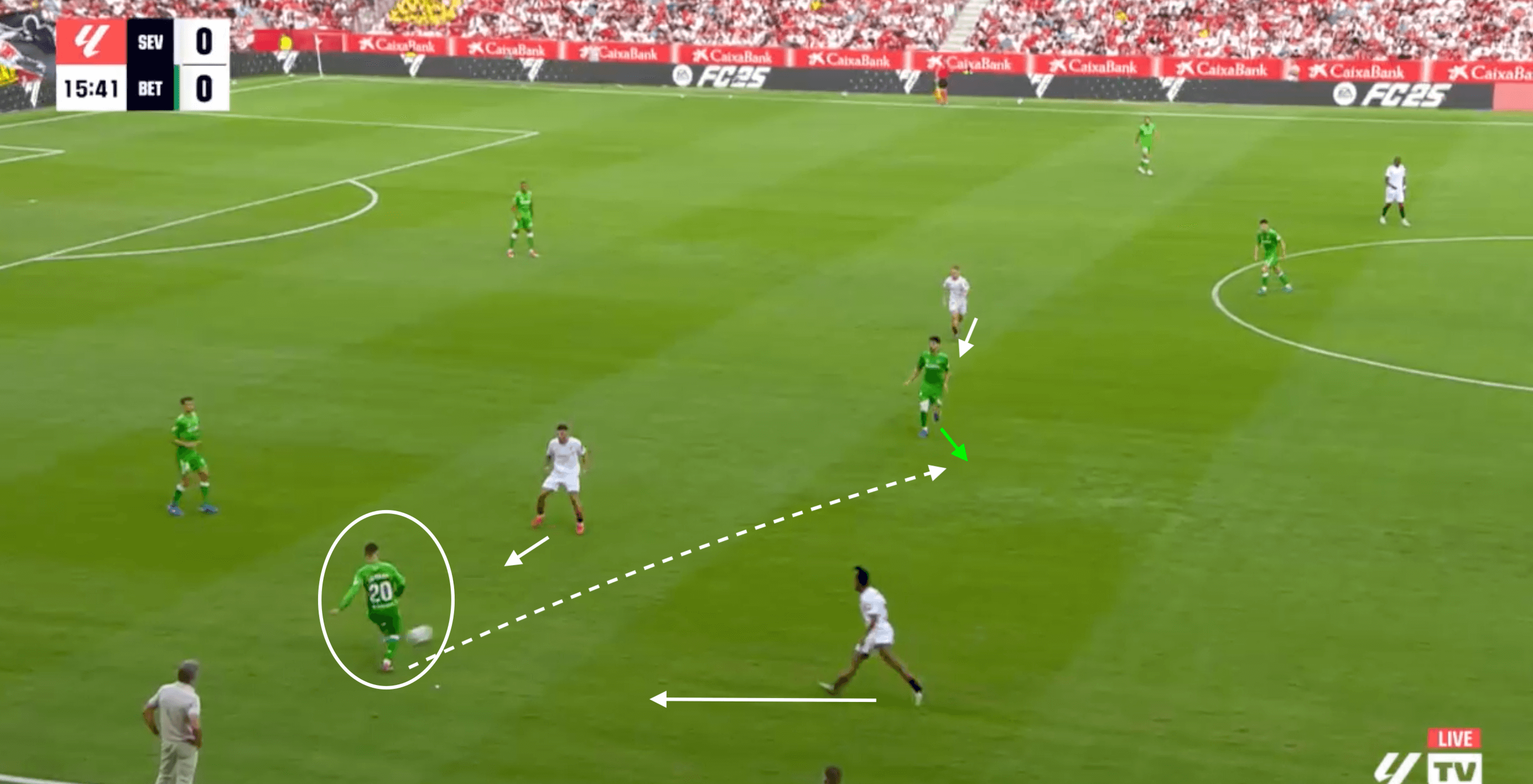
The dynamic nature of Pellegrini’s midfield allows this to happen to great effect, with Lo Celso often becoming more of a deep-lying playmaker, which allows his double pivot to pick up positions much closer to the opponent’s box.
While these decisions to draw Lo Celso away from the attacking third may be seen as counterintuitive, his ability to effectively occupy these deeper positions emulates some of the best midfielders in recent LaLiga history—á la Toni Kroos.
The truth is that Lo Celso has displayed a unique ability to form meaningful chances no matter where he has been positioned, further accentuating his side’s attacking speed and his own personal passing range.
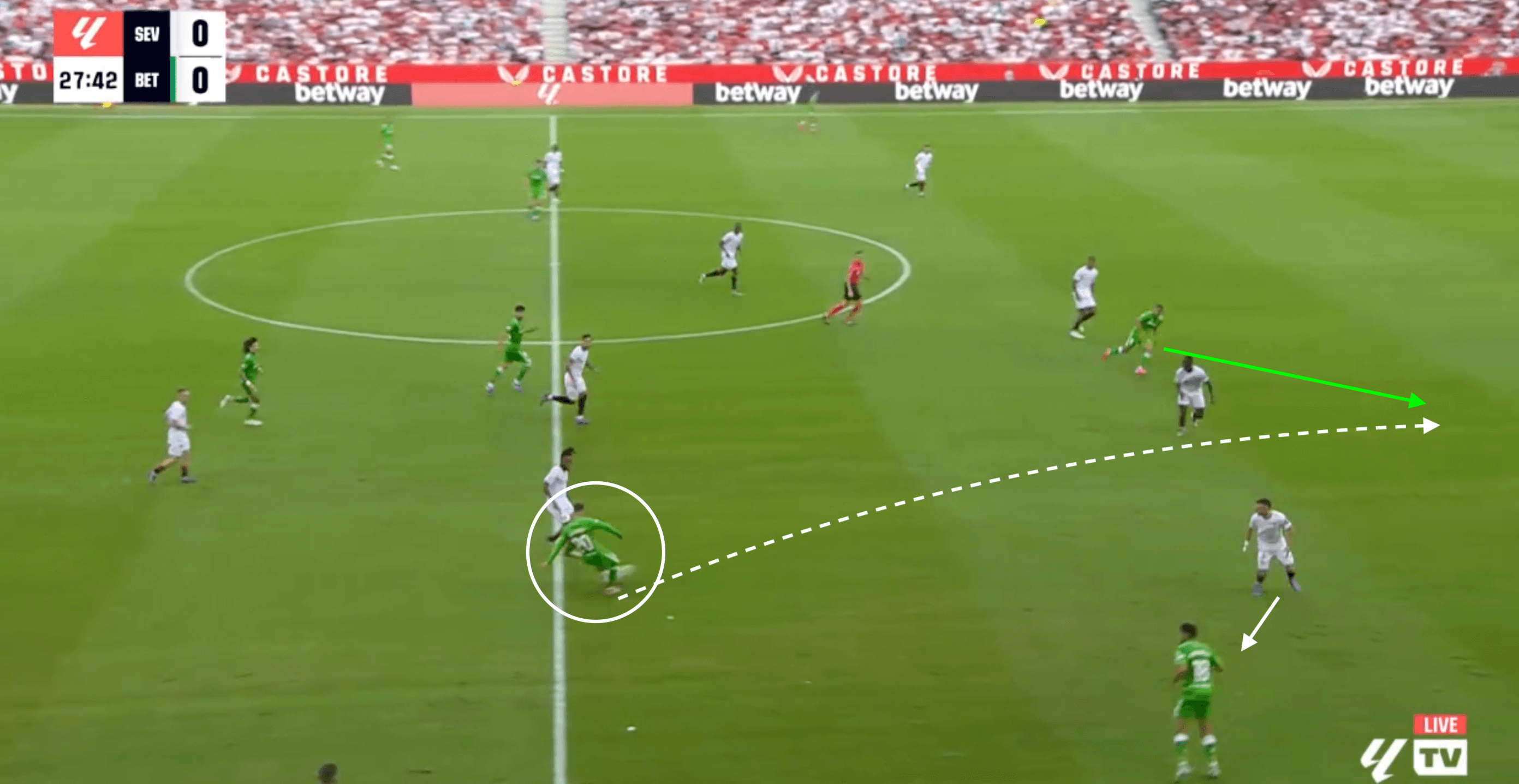
Catalyst For Creativity
Despite having success when dropping deeper, Lo Celso has looked the most sharp and dangerous when operating between the lines in and around the edge of the box.
From these areas, the Argentine has begun to quickly build important rapport with Vitor Roque and Ez Abde, two of Betis’ most dynamic ball carriers.
These connections are mutually effective, as Lo Celso has displayed a greater preference for progressive passes (9.43 per 90) than progressive carries (1.57 per 90), for example.
So, getting the ball into the feet of a player like Ez Abde, who ranked within the top 1% of wingers for progressive carries last season (6.17 per 90), has certainly improved Betis’ capacity for penetrative runs into the box and can be linked to their increased expected goals tally.
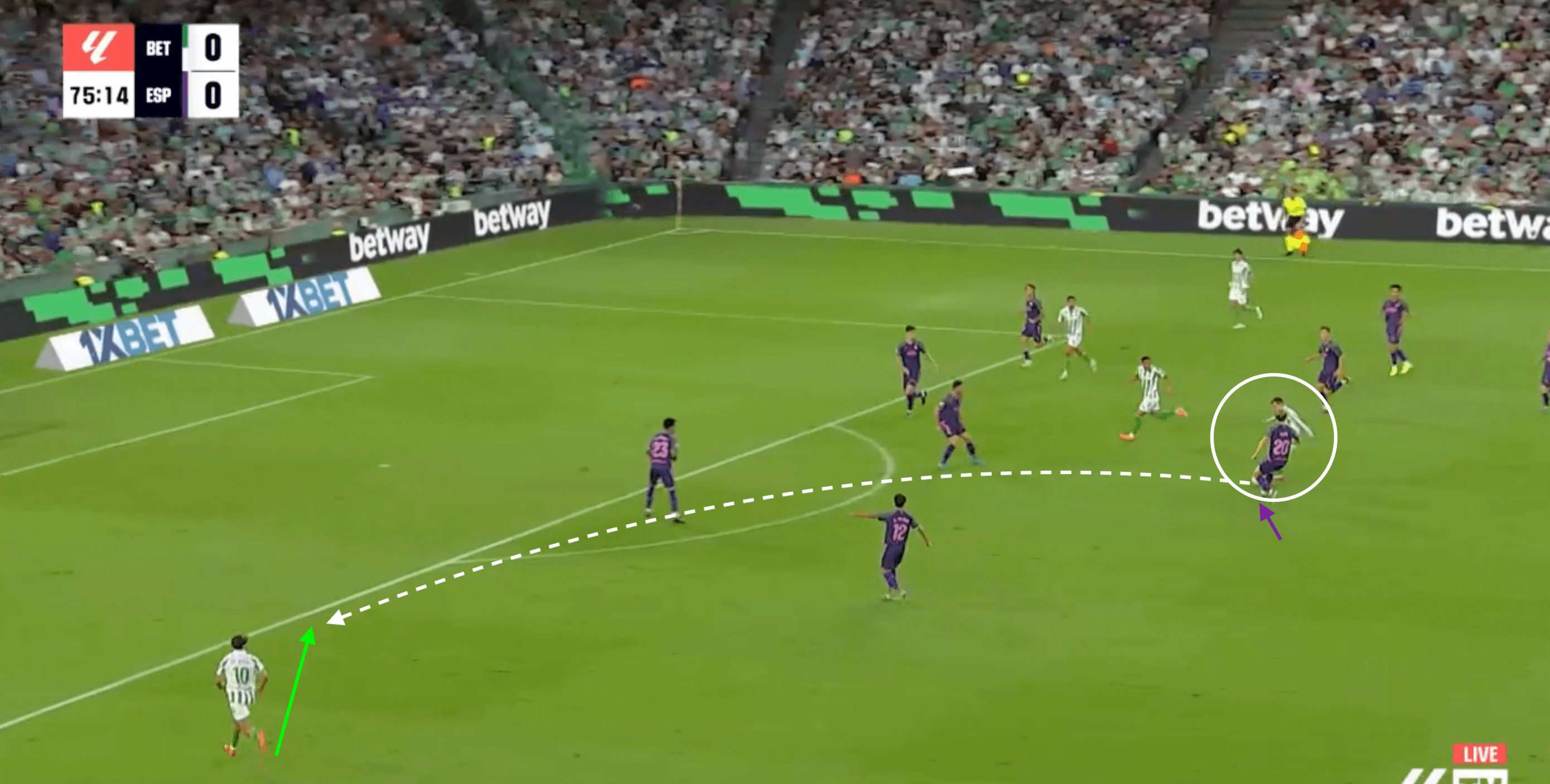
One of the major improvements to Betis’ attacking play has been their ability to be more unpredictable in transition, with Lo Celso contributing to the fact that Betis can launch attacking sequences at an increased speed.
A great example of this would be when Betis were able to spark into a rapid counter-attacking move against Leganes, with Lo Celso quick to become the controlling factor as his side progressed up the pitch.
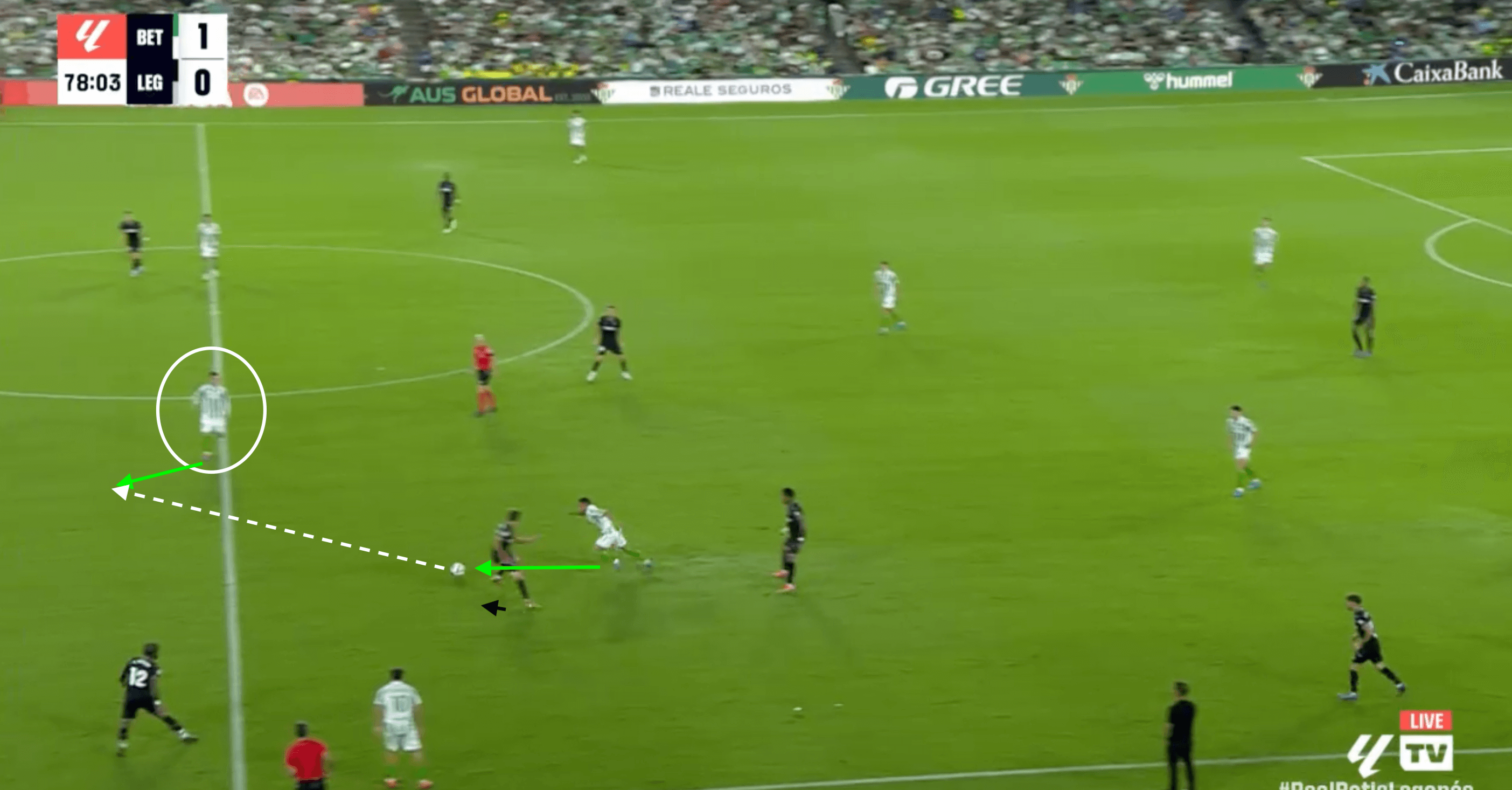
It was his final ball that showcased his incisive passing qualities. With the speed at which he opted to play through the lines, he even caught the Leganes defender out, once again allowing Abde to break into space behind the defensive line.
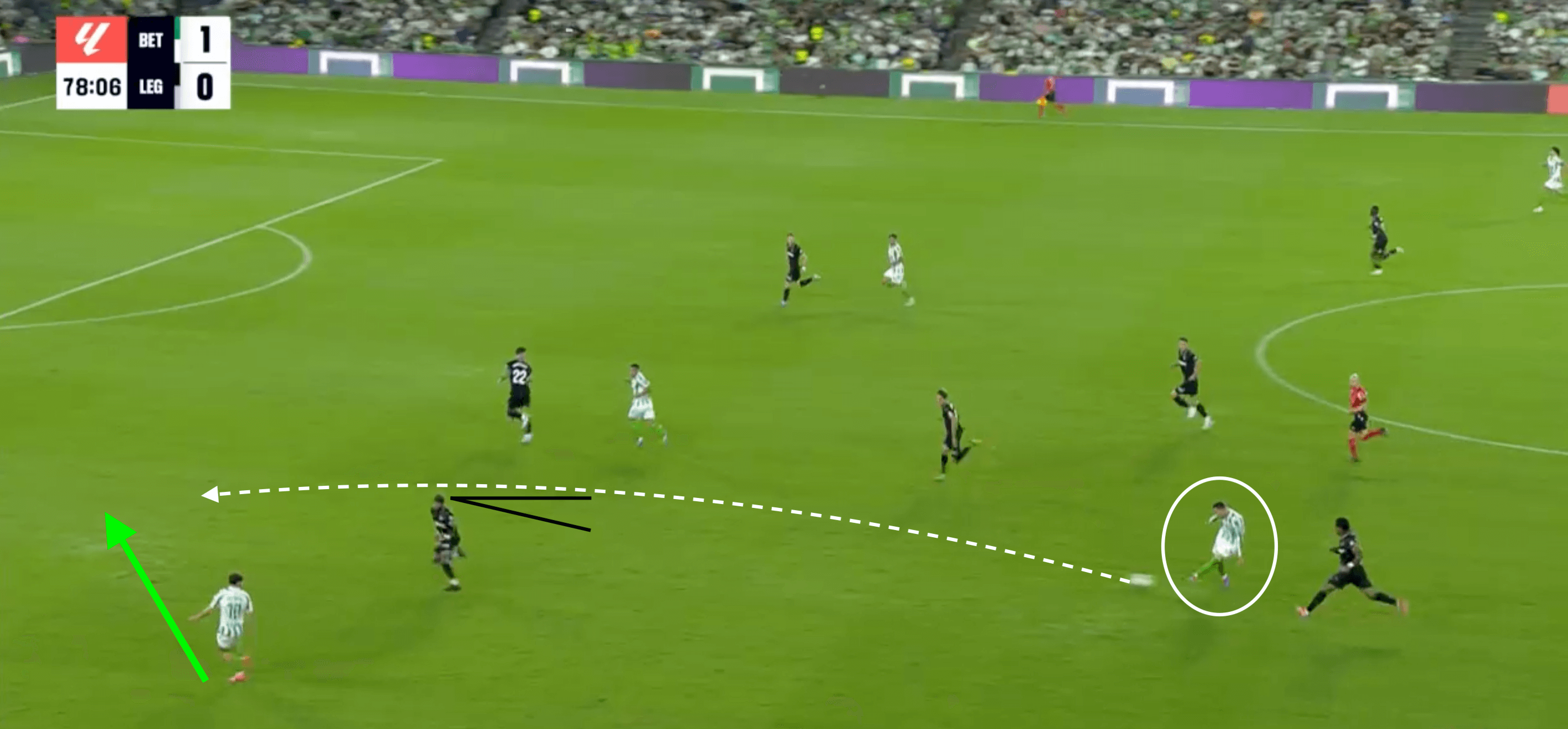
Lo Celso Out Of Possession
Without the ball, Lo Celso has also been an important piece of the puzzle in allowing Real Betis to be more effective in their pressing efforts, as shown by their early PPDA figure of 9.18 (fourth in the league).
As Betis’ standout number ten, Lo Celso is tasked with advancing forward to support either Bakambu or Roque in the first line of resistance; but acts quite differently when compared to Isco’s efforts last season.
We saw Isco operate in a much more aggressive defensive role, whilst Lo Celso can be shown positioning himself in close proximity to the opposition’s single pivot.

The combination of the two Betis forwards negating Sevilla’s outlet ball through the centre forces the home side to progress down the left flank, a pattern of play which has been displayed throughout other matches this season.
However, against Espanyol, we saw Lo Celso shift further wide to the right flank, potentially because of the increased mobility that Iker Losada could offer through the centre.

With Lo Celso able to pin his marker towards the touchline, we see how effective Real Betis’ pressing structure can be. Bellerin presses higher out of the defensive line to cut out any profitable passing outlet for their opposition.
Can Isco And Lo Celso Co-exist?
The emergence of Lo Celso this season has sparked an interesting debate about how Pellegrini can use the talents of both Isco and Lo Celso within the same starting eleven.
Manuel Pellegrini himself expressed the importance of Isco’s eventual return, but Lo Celso has shown impressive traits outside of his creative prowess, which would lend well to a deeper position.
It has been interesting to see the relationship between Lo Celso and Cardoso in the Betis midfield—a strange combination after Cardoso’s transfer rights were actually offered to Tottenham as part of the deal that saw the Argentine transfer to Los Verdiblancos.
Nevertheless, the pair possess the necessary comfortability in possession whilst also displaying an important defensive relationship to prevent opposition attacks through the centre of the pitch.
This was evident when Lo Celso was dispossessed against Las Palmas when the duo exhibited a great recovery pace to occupy key defensive zones.
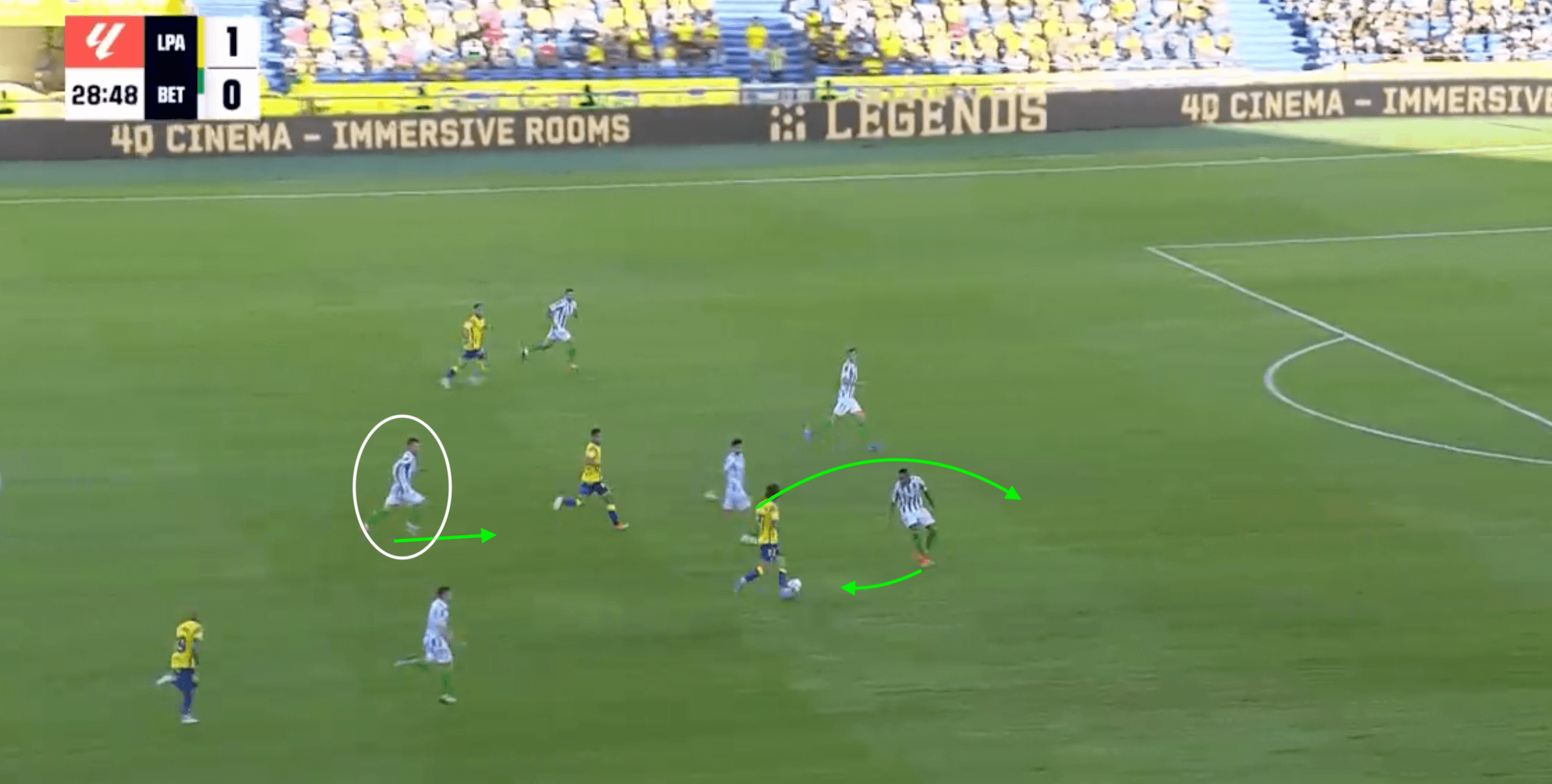
Cardoso was able to drop into the defensive line to complement Natan’s aggressive defensive style, while Lo Celso could execute a perfectly timed sliding tackle to regain possession and prevent a dangerous chance on goal.
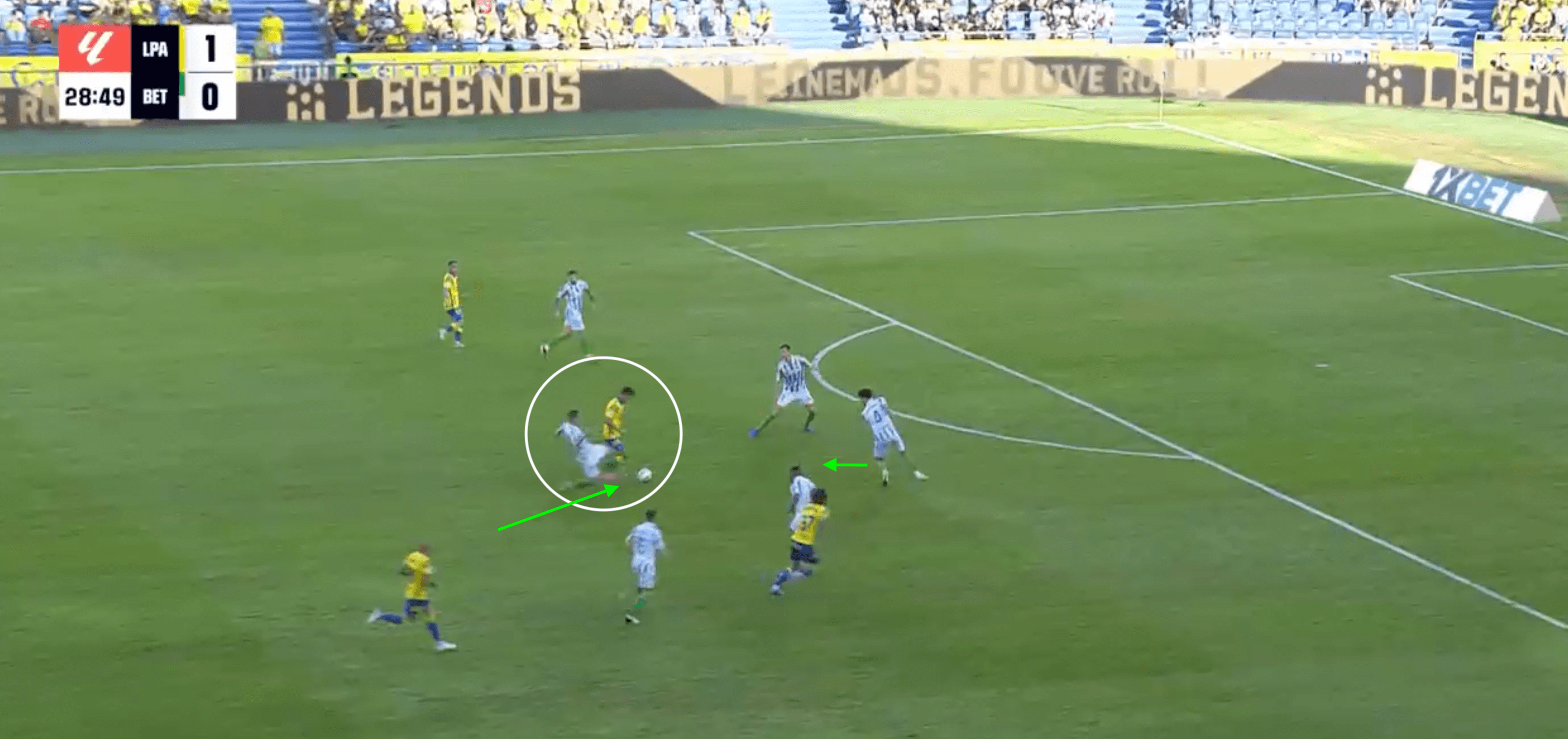
Lo Celso’s impressive 5.50 ball recoveries per 90 minutes cement him as one of the most well-rounded attacking midfielders in LaLiga. This further supports the notion that the Argentine could partner with Cardoso as an effective double pivot.
Examples from elite football have shown us that a high-functioning double pivot should have contrasting qualities that work well together to achieve the overall team goals.
And for Betis, whilst a midfield trio of Lo Celso, Isco, and Cardoso may be slightly vulnerable against some of the world-class outfits in LaLiga, it would undoubtedly be box-office viewing to see how they could overwhelm weaker opposition with their progressive attributes.
Conclusion
Our analysis has identified some of the reasons why Giovani Lo Celso has been such a breath of fresh air upon his return to LaLiga, donning the green and white stripes with pride in his second spell.
His arrival was certainly much needed after the loss of key attacking figures in the summer window, but few would’ve imagined such impressive goalscoring and creative performances, slotting into Pellegrini’s system so seamlessly.
The seemingly forgotten man at Tottenham is once again finding a platform to shine at the Estadio Benito Villamarín.





Comments